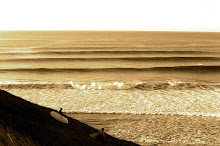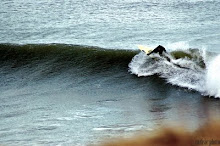Zen in the Art of Cycle Commuting

Part I
There is a certain meditative experience that can be had while riding a bicycle. It is not much different to the experience described as runners high. In the samurai tradition, Kenjutso (the way of the sword) was used as a form of focused meditation. In the shamanistic traditions as well, repetitive physical movement is often used, coupled with some sort of hallucinogen, to achieve a trance-like state that allows a shaman to transcend the earthly and become one with the spiritual world. Most of us have seen the National Geographic special where a group of men sit around a fire beating drums while the shaman dances and twists around them, eventually dropping into convulsions only to rise from the ground possessed by a spirit, ready to engage in the nights esoteric work.
In Japanese Zen Buddhism there are several traditional ways to achieve meditative states through physical exertion or focused practice. Zen in the Art of Archery by Eugen Herrigel describes the Zen experience through the study of Japan’s rich archery tradition. This essay was inspired in part by this particular work. But the focus here will be on the meditative and transcendental aspects or riding a bicycle though crowded city streets as opposed to the practice of Zen Buddhism. For those interested in pursuing Zen knowledge I would recommend the title above as well as works by D.T. Suzuki and Alan Watts.
There will be three parts to this essay. The first will focus on describing the physical needs that must be attended to in order to begin your practice. More specifically, the first section will discuss in minor detail the bicycle. In the second we will focus on the riding style. Things such as spin, braking, cornering, and pace will be covered along with breathing practice and of course, traffic. And finally, the end will be an attempt to describe the feeling of peace, the feeling of lightness and flowing that can overcome one when all aspects are in line and the rider’s focus is clear.
There is no doubt that attempting to describe such a thing can seem a ridiculous undertaking, as if words could ever do justice to a spiritual experience. And I must add that by spiritual I am not referring to any sort of religious use of the word, the word spiritual is chosen to describe a state other than our immediate physical and concrete world. So it is with good humor and a light heart that I will attempt to cover this ethereal subject.
The Bike
Undoubtedly, the easiest and shortest path to bike Zen is by riding a fixed gear bicycle. Fixed gear refers to the inability to coast or to stop moving the pedals while the machine moves forward. In the beginning all bicycles were fixed and coasting was not an option. As technology improved and freewheels became the norm, fixed gear bikes were strictly used in track racing. In recent years fixed bikes have enjoyed a mass rebirth across North America and Europe. The Fixed Gear Gallery is probably the web’s most important resource on fixes and boasts over 3000 homespun fixes from all over the world.
The reason why a fixed is the shortest path is simple, once a rider has learned to ride fixed, the bicycle almost disappears beneath the rider and the experience is not unlike being hurdled through space by some unseen force. The simplicity of a fix allows the rider to focus on their surroundings or their inner thoughts for that matter, rather than think about shifting, braking, etc. A single speed bicycle that coasts is another short path to Zen. Both the fixed and single speed offer the rider the simplicity of one gear and therefore allowing focus on the “spin” and even breathing. The spin refers to your cadence. Every rider has his or her own rhythm. The key is to identify a gear ratio that will allow you to spin with ease, legs becoming supple and breathing even and unforced.
Please note that I am not suggesting that a geared rider cannot achieve a meditative state. However, it becomes more difficult because there are many more variables in the mix. And I will not delve into discussions about lights, helmets, or any other type of safety gear. Individuals must take whatever precautions they deem necessary to feel at ease. It is a rather personal matter that is ultimately inconsequential to the task at hand.
The bicycle works at its best when the chain is clean and oiled, everything is tight, the tires have the right pressure, the seat and bars are at the perfect height and there are no rattles or squeaks. Once again, on a fixed gear bike there are so few parts that it is quite easy to achieve a tight and quiet machine. The lack of a freewheel on the fix makes it silent by virtue. Aside from the obvious safety reasons, a well-tuned and oiled bike is a beauty to ride and will fail less often than a dirty rattletrap bike. What self-respecting samurai would walk out of his home with a blunt sword? Unthinkable!














.jpg)




No comments:
Post a Comment